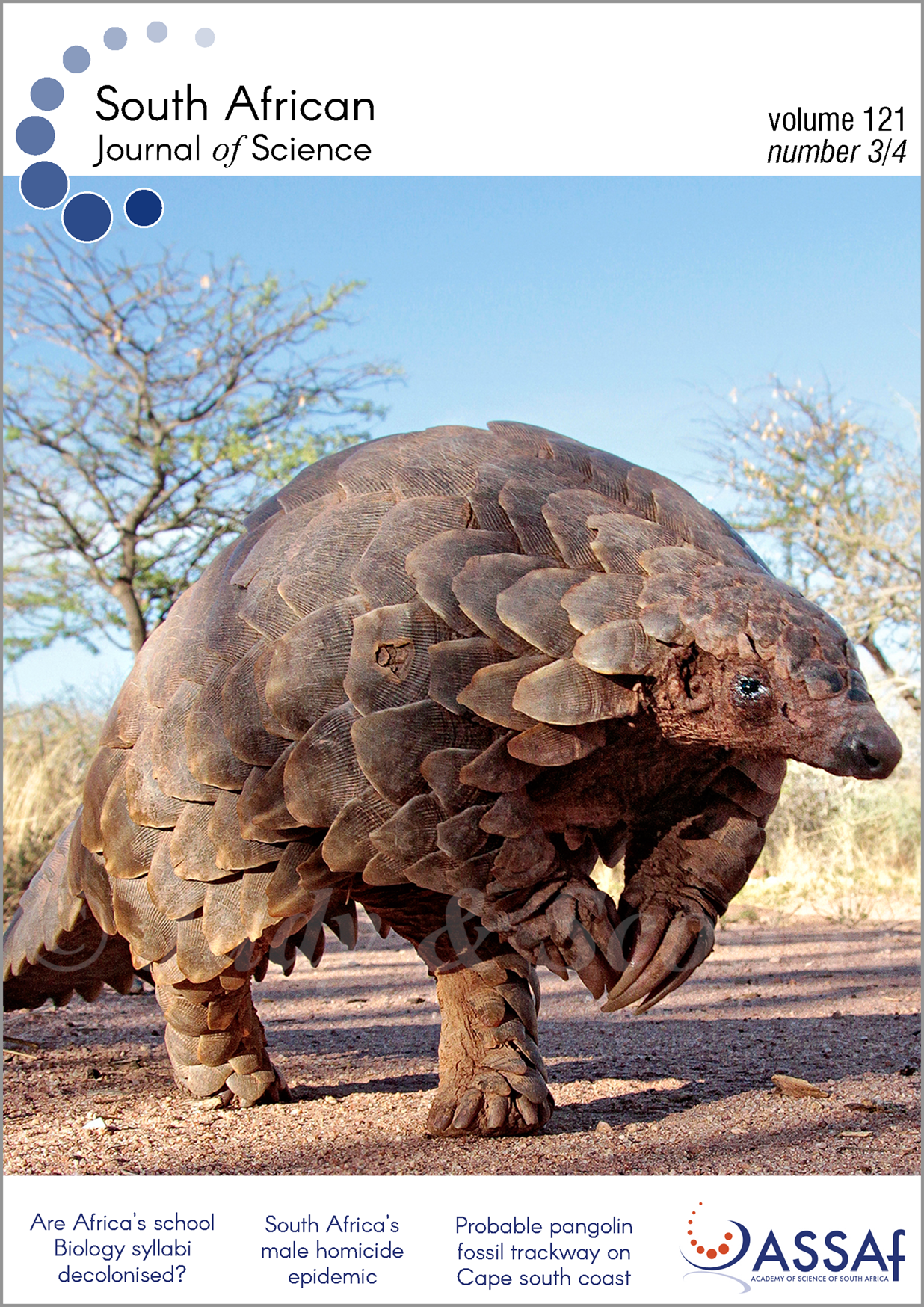
About the cover:
A Temminck’s pangolin (Smutsia temminckii). Helm and colleagues describe a Pleistocene probable pangolin trackway discovered east of Still Bay in the Western Cape Province of South Africa. All extant pangolin species are threatened with extinction.
Image with permission: ©Scott Hurd
Full online issue available here.
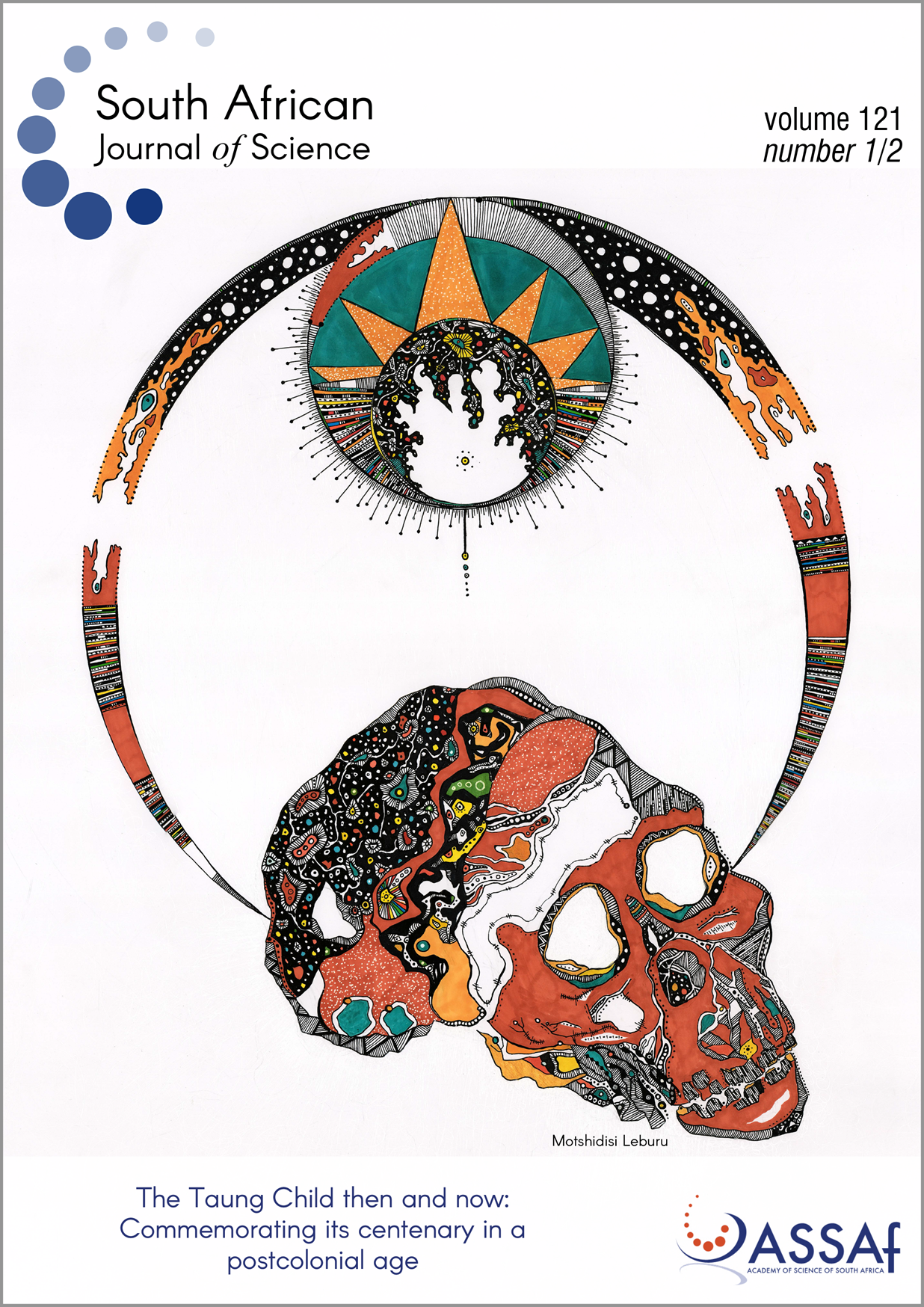
The Taung Child then and now: Commemorating its centenary in a postcolonial age
Cover image: Legata la Taung [Taung Skull] by Motshidisi Leburu
Artist’s description of the cover image: My inspiration for this project is from Darwin’s Hunch and Our Science, Ourselves, both written by Christa Kuljian. I created the artwork from a point of emptiness, and ended with tapestry colours, tones and textures that reflect a diverse and controversial history of the Taung Skull.
Tlhaloso ya setshwantsho sa khabara: Buka ya ‘Darwin’s Hunch’ le ya ‘Our Science, Ourselves’ ke tsone di nthotloeditseng go dira porojeke eno mme ka bobedi jwa tsone di kwadilwe ke Christa Kuljian. Ke takile setshwantsho seno ka go se itshimololela, mme ka feleletsa ke dirile mebala e e galotseng, mebala e e tswakaneng e e nang le boleng, e e supang hisitori ya methalethale e e aparetsweng ke kgang ya moruthutha ka Logata lwa kwa Taung.
A note from the Editor-in-Chief
Full online issue available here.
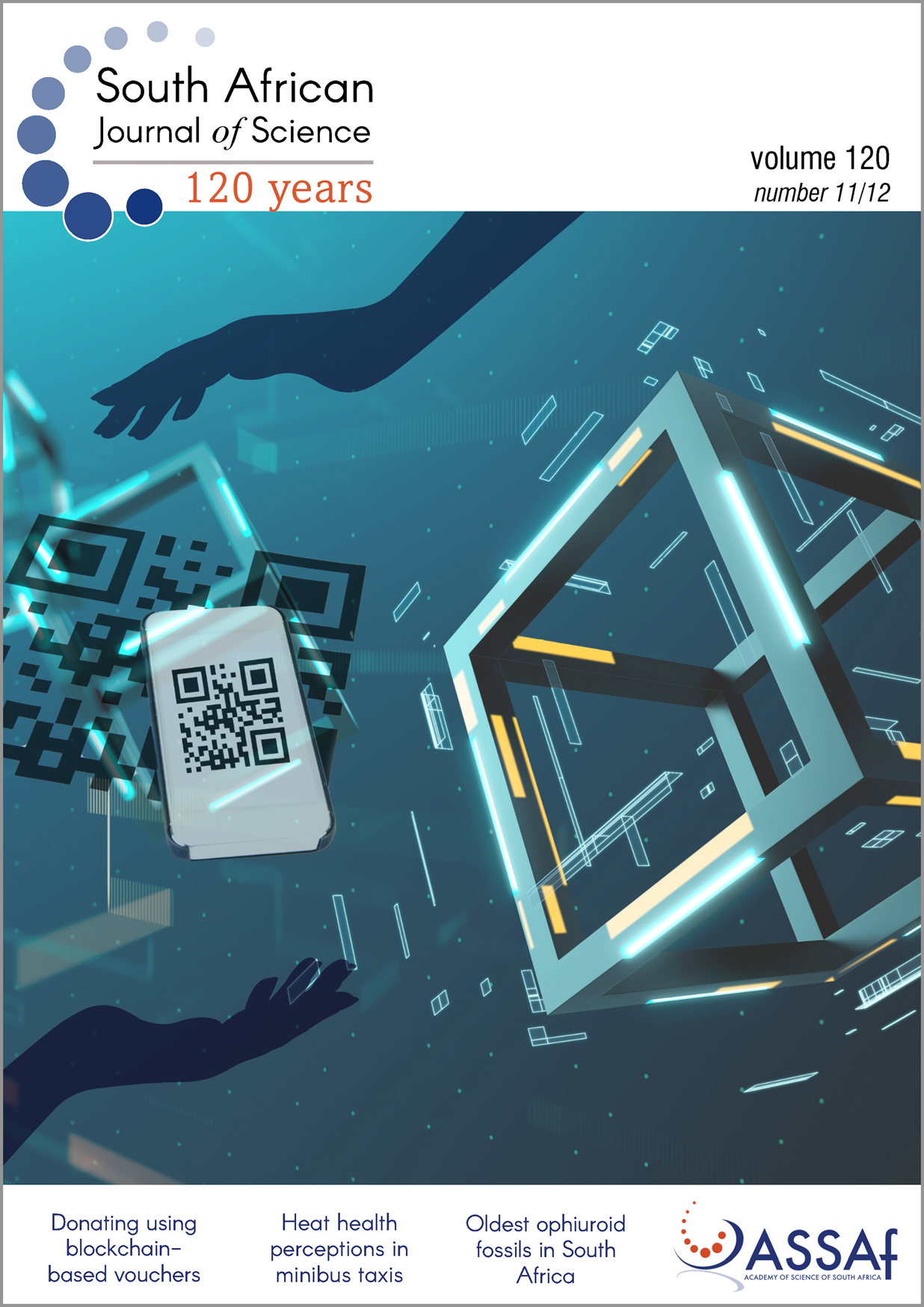
About the cover:
As the world moves towards cashless transactions, the many people in South Africa doing informal work for which they receive small amounts of cash or donations could increasingly receive less of this informal financial support. Harraway and Bekker describe the development of a secure architecture for cashless donations through a digital voucher management system based on blockchain.
Full online issue available here.
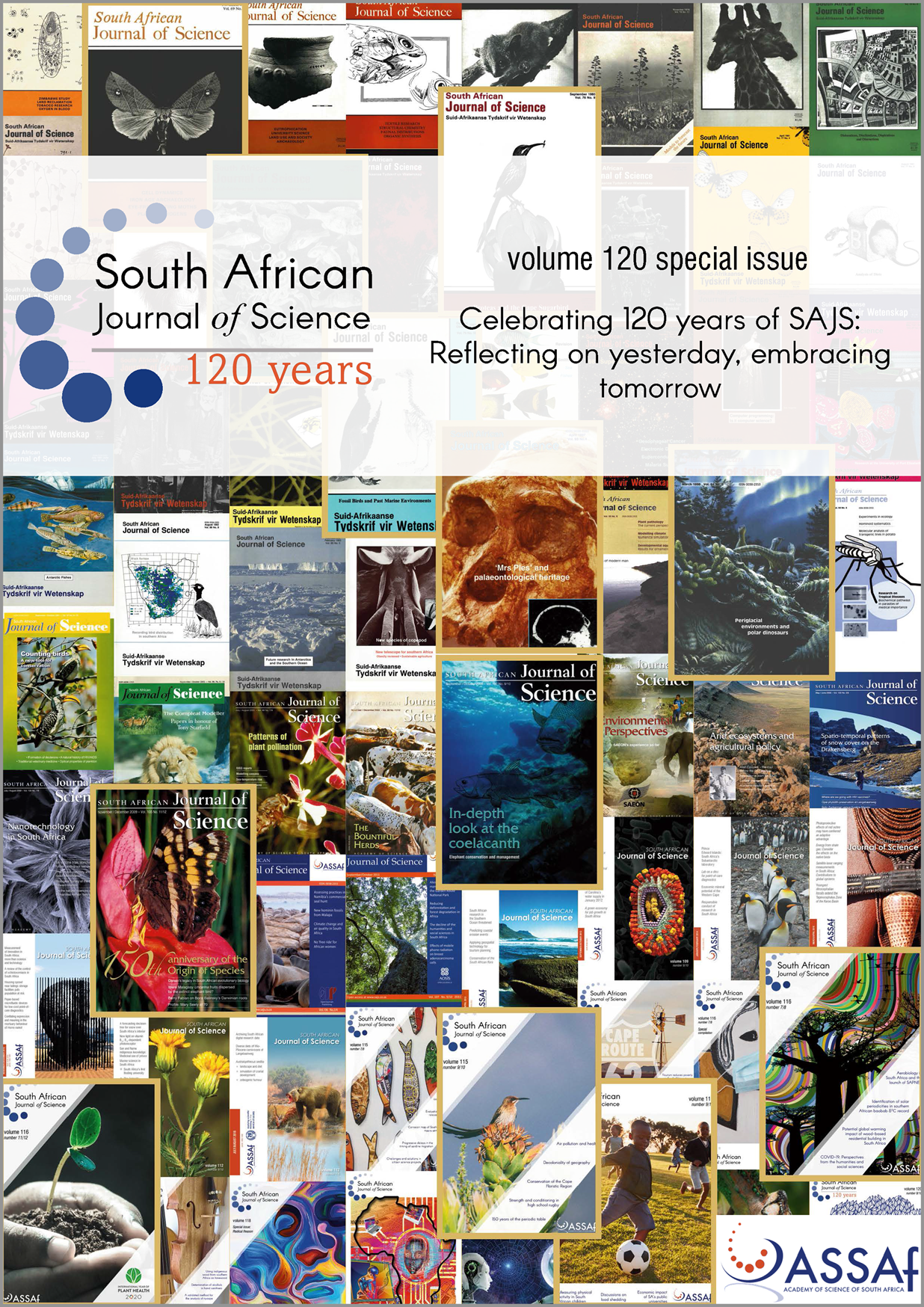
About the cover:
This special issue, ‘Celebrating 120 years of SAJS: Reflecting on yesterday, embracing tomorrow’, is a commemoration of 120 years of continuous publishing of the Journal, albeit with changing formats and changing names. Contributors to this special issue reflect on the history of the Journal and its role in the history of South African science, in ASSAf and in the mentoring of early-career researchers.
Cover image: The many ‘faces’ of the SAJS through the last few decades. The larger, framed covers of the Journal are those that were selected as ‘the best’ of each decade by SAJS readers and social media followers. Cover design: Nadia Grobler.
Full online issue available here.
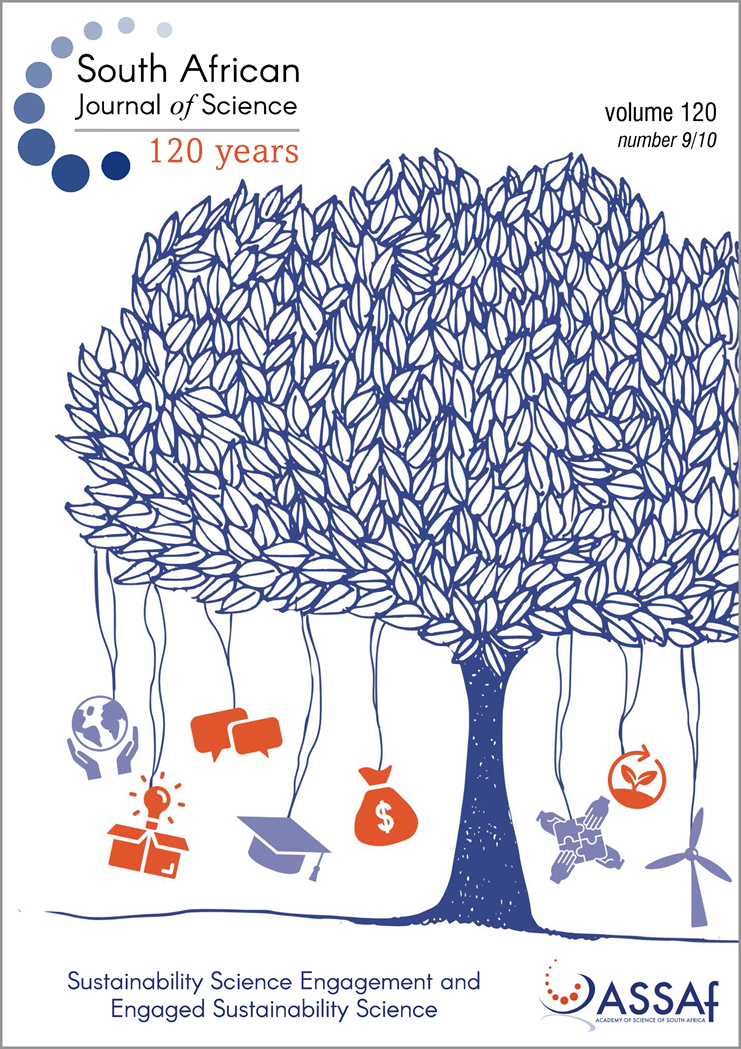
About the cover:
This special issue on ‘Sustainability Science Engagement and Engaged Sustainability Science’ juxtaposes science engagement with engaged science. The contributions, with their diversity of perspectives, help to more substantively elaborate the full meaning of transformative science for and with society, including in and through educational interventions that can advance engaged science and science engagement.
(Cover design: Nadia Grobler)
A note from the Editor-in-Chief
Full online issue available here.

About the cover:
Emergency care providers arriving at a hospital emergency department. In this issue, Govender and colleagues review the state of emergency medical services in South Africa, and Fitchett, Saffy and Lewis investigate the availability of antidotes for drug poisonings in emergency departments in a South African province.
Full online issue available here.

About the cover:
Ridel and colleagues show that ancestry, sex and age influence the biological variability of both soft and hard tissues of the nose in modern South Africans. Their findings emphasise the importance of considering biological parameters in generating identification guidelines for facial reconstruction of unidentified persons.
Image: Ridel et al.
Full online issue available here.
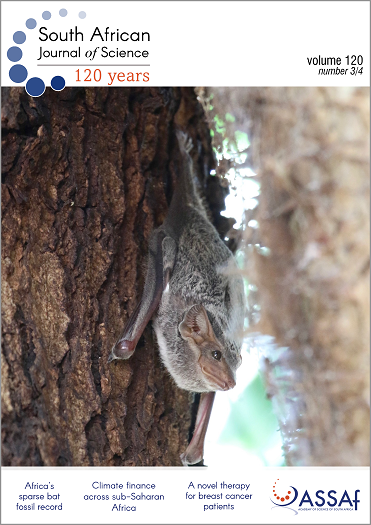
About the cover:
A Mauritian tomb bat (Taphozous mauritianus). Mariette Pretorius asks why bat fossils in Africa are so rare, and how this rarity impacts our understanding of modern bats and their conservation.
Image: ©skvorpahl on iNaturalist (CC-BY-NC)
Full online issue available here.
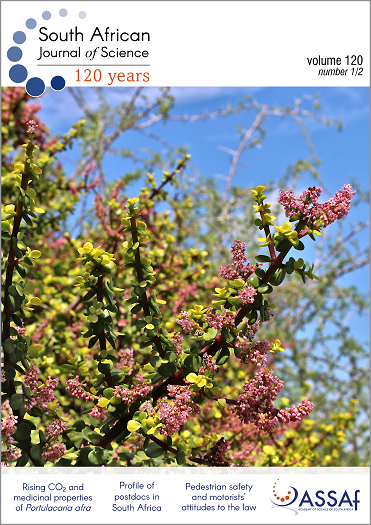
Portulacaria afra bush in Worcester, South Africa. Portulacaria afra – commonly known as spekboom or elephant bush – is a medicinally important plant species endemic to South Africa. Basson and colleagues investigated the effect that rising atmospheric CO2 levels may have on the medicinal properties of this plant.
Photo by Dean Erasmus on Unsplash
Full online issue available here.
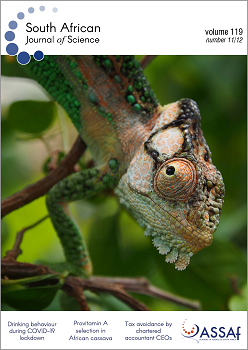
A Knysna dwarf chameleon (Bradypodion damaranum). In their study, Adair and colleagues explored the efficacy of a minimally disruptive DNA sampling technique, buccal swabbing, as an alternative to tissue sampling via tail clipping, in dwarf chameleons (Bradypodion spp.).
Image: ©dianastromberg on iNaturalist (CC-BY-NC)
Full online issue available here.
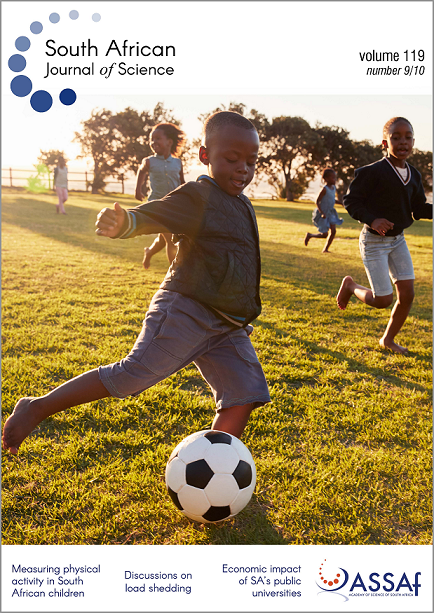
South African children playing. Physical activity has positive effects on cardiovascular health that can be observed already in childhood. In their Research Article, Arnaiz and colleagues compare two methods to assess physical activity levels in children in Gqeberha, South Africa. And in their Commentary, Breet and colleagues reveal that South African children are wearing school shoes that do not properly fit as they are not designed to fit the unique foot shape of habitually barefoot South African children.
Full online issue available here.
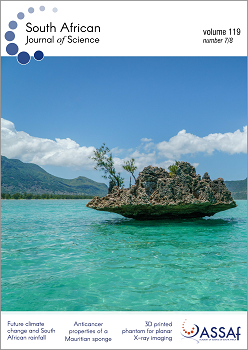
About the cover:
The Republic of Mauritius is a maritime country with a vast potential for marine organisms that are not yet fully utilised as sources of bioactive substances. The exclusive economic zone of Mauritius harbours a diverse assemblage of Neopetrosia species and thus opportunity for the discovery of new bioactive agents. In their article, Beesoo et al. report on the promising anticancer activity of extracts derived from the marine sponge Neopetrosia exigua, collected from Mauritian waters.
Full online issue available here.
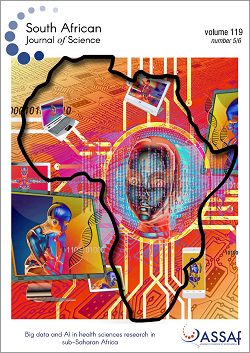
This special issue on ‘Big data and AI in health sciences research in sub-Saharan Africa’ introduces a broad range of scientific, ethical, legal and social concerns in the realm of data-intensive research and artificial intelligence (AI) in sub-Saharan Africa. Technology brings enormous benefit, but comes at a price, and with potential harms. Articles in this special issue explore the benefits of data science; the importance of data management, quality and integrity; challenges of engaging communities and stakeholders in data science; ethical and legal issues raised by the gathering and use of mobile phone data; the direction of AI governance in the sub-Saharan African context; and voices from scientists and research ethics committee members.
Full online issue available here.
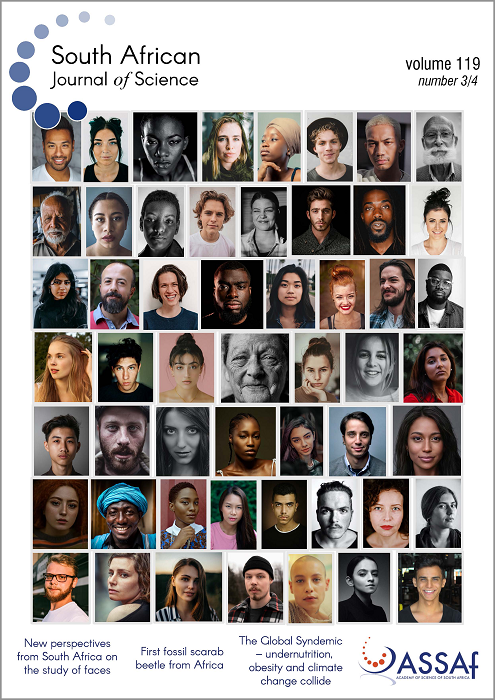
About the cover:
What’s in a face? Our faces are central to our identity and to how we perceive our environment, communicate, and express ourselves. A special section on Face Science in this issue presents cutting-edge research and new perspectives on the study of faces within South Africa.
Full online issue available here.

About the cover:
“… a revolution that is fundamentally changing the way we live, work, and relate to one another. In its scale, scope and complexity… is unlike anything humankind has experienced before.” These are the words of Klaus Schwab speaking about the Fourth Industrial Revolution (4IR). In his article, Moll states that the ‘technologies of the 4IR’ are merely evolutions of the 3IR and not groundbreaking inventions of contemporary times. In their responses to Moll’s article, Marwala and Ntlatlapa argue for the existence of the Fourth Industrial Revolution.
Full online issue available here.
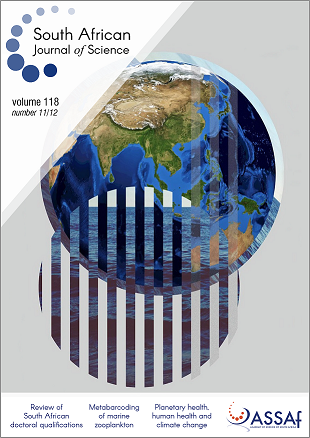
About the cover:
Ocean sustainable development, sustainability, and inclusivity are features of the Operation Phakisa ‘Unlocking the Ocean Economy’ Programme which strongly align it to a blue economy model. How marine geophysics provides new insights into a Marine Protected Area and metabarcoding of zooplankton to indicate marine ecosystem status are the subjects of other articles on ocean health in this issue which focuses on climate change, and planetary and human health.
Full online issue available here.
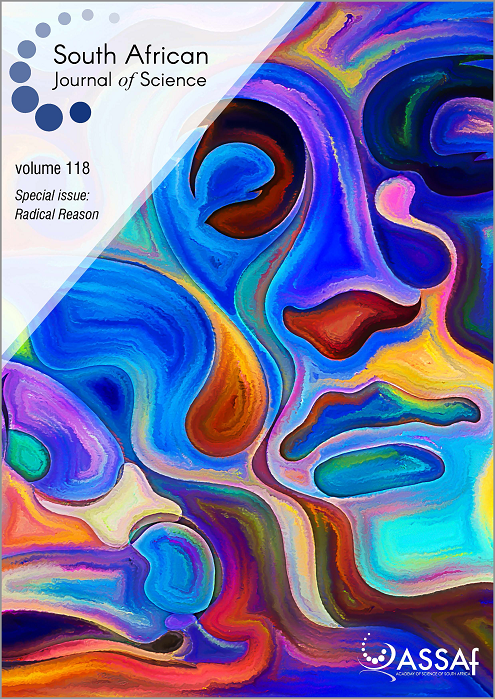
About the cover:
Radical Reason
The aim of this special issue is to show how African thought has and could contribute to the development of new logics and new forms of reason and to reflect on the full complexity of the lived experiences and conditions of being in the world now – on the horizon of the emergence of a not yet fully determinable world when radical thought, science, ethics, institutional arrangements, and other shared systems of valuation and understanding, are required to give depth and meaning to the full articulation of the questions that we need to be asking now to engender the arrival of a just and equal world to come. No one discipline or system of thought can answer the questions the world is facing today. This is the time for ‘radical reason’.
This special issue emanates from the contributions of the HSRC Radical Reason ‘Conversations with Global Thinkers’ series that took place at the 2020 Science Forum South Africa. The publication of this special issue was sponsored by the Human Sciences Research Council (HSRC) of South Africa.
Full online issue available here.
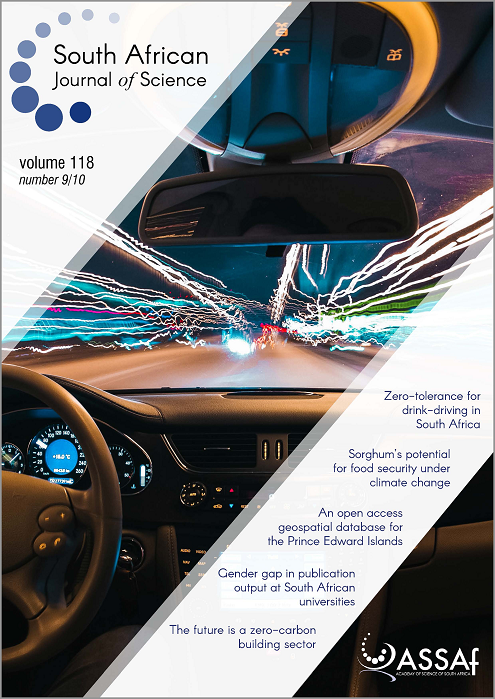
About the cover:
Alcohol is a major contributing factor to the burden of road traffic crashes and injuries in South Africa. Sukhai and colleagues review global research and experiences with the adoption of zero-tolerance approaches to drink-driving, along with key South African contextual considerations, to provide recommendations for advancing zero-tolerance drink-driving legislation in South Africa.
Full online issue available here.
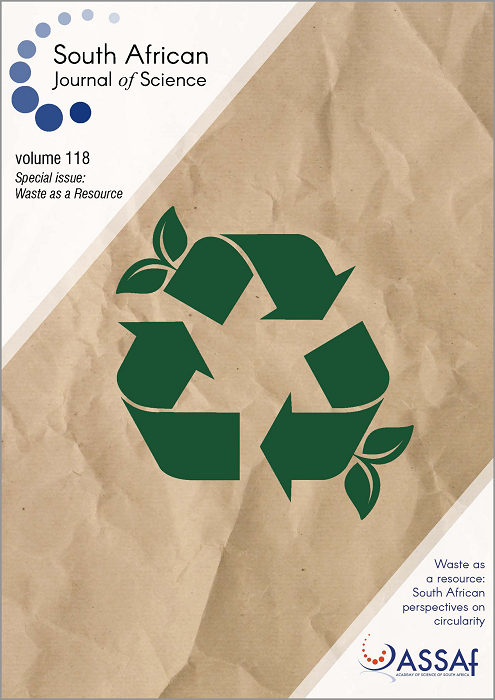
About the Cover:
Waste as a resource: South African perspectives on circularity
Circularity, with a focus on waste management, influences social and economic resilience as well as planetary health. This special issue presents the current societal and environmental issues in waste, the technology available, and the sustainable practices within the waste sector to achieve a socially just transition to a waste economy within South Africa’s socio-economic context.
The publication of this special issue was sponsored by the Community of Practice (CoP) ‘Waste to Value: Transitioning South Africa towards a Waste-to-Resource Circular Economy’ funded by the National Research Foundation of South Africa.
Full online issue available here.
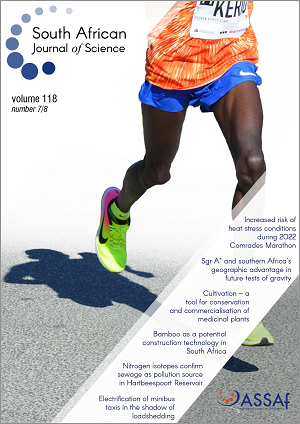
About the cover:
The Comrades Marathon is South Africa’s most recognised and largest ultramarathon event. The race will be held later in the year – in August – in 2022 than in previous years. Havenga and colleagues show that the later date will increase the risk of heat stress conditions for the runners.
Full online issue available here.

About the cover:
‘How to do social distancing in a shack: COVID-19 in the South African context’
The somewhat ironic title for this special issue captures a dilemma that we seek to address: how to bring together the best thinking in the social sciences and the biomedical sciences to work through the complex challenges posed by COVID-19. How, indeed, does one do social distancing in a shack?
Full online issue available here.

About the cover:
A springbok (Antidorcas marsupialis). Rossouw compares the distal phalanges of adult springbok and shows distinctive morphological differences between the subspecies Antidorcas marsupialis marsupialis and Antidorcas marsupialis hofmeyri. Photo: Leon Pauleikhoff
Full online issue available here.
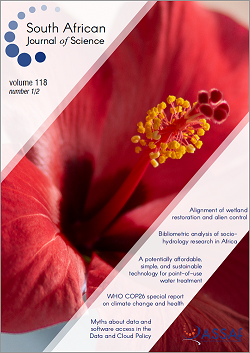
About the cover:
Flower of Hibiscus sabdariffa L. The hibiscus is rich in phytochemicals, particularly polyphenols and anthocyanins. El-Naeem and colleagues investigated xanthine oxidase inhibition by isolated anthocyanins for development of potential novel drugs to treat diseases such as gout and hypertension.
Full online issue available here.
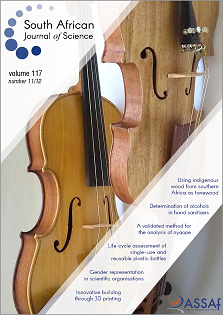
About the cover:
Two African violins (photo: Martina Meincken). Meincken and colleagues show that several southern African wood species are suitable to be used as tonewoods and that the sound produced with such a violin is – although somewhat different – of high quality, comparable to the sound quality of violins made traditionally from spruce and maple wood. The violin on the left was made from yellowwood and sapele (by Hannes Jacobs) and the violin on the right was made from blackwood, hardpear and sapele (in the Department of Forest and Wood Science at Stellenbosch University with the help of Hadley Dumini).
Full online issue available here.
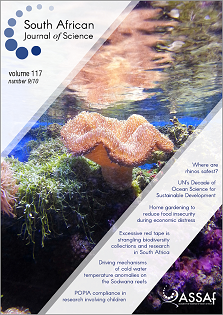
About the cover:
Colourful corals. Corals become stressed when exposed to elevated temperatures for extended periods and bleaching can occur. Wells and colleagues analyse temperature measurements taken between 1994 and 2015 on Nine Mile Reef at Sodwana to elucidate the driving mechanisms of the temperature anomalies around Sodwana. Sodwana experiences short-term temperature fluctuations that may provide relief from coral bleaching and be crucial in the future survival of the Sodwana reef system.
Full online issue available here.
